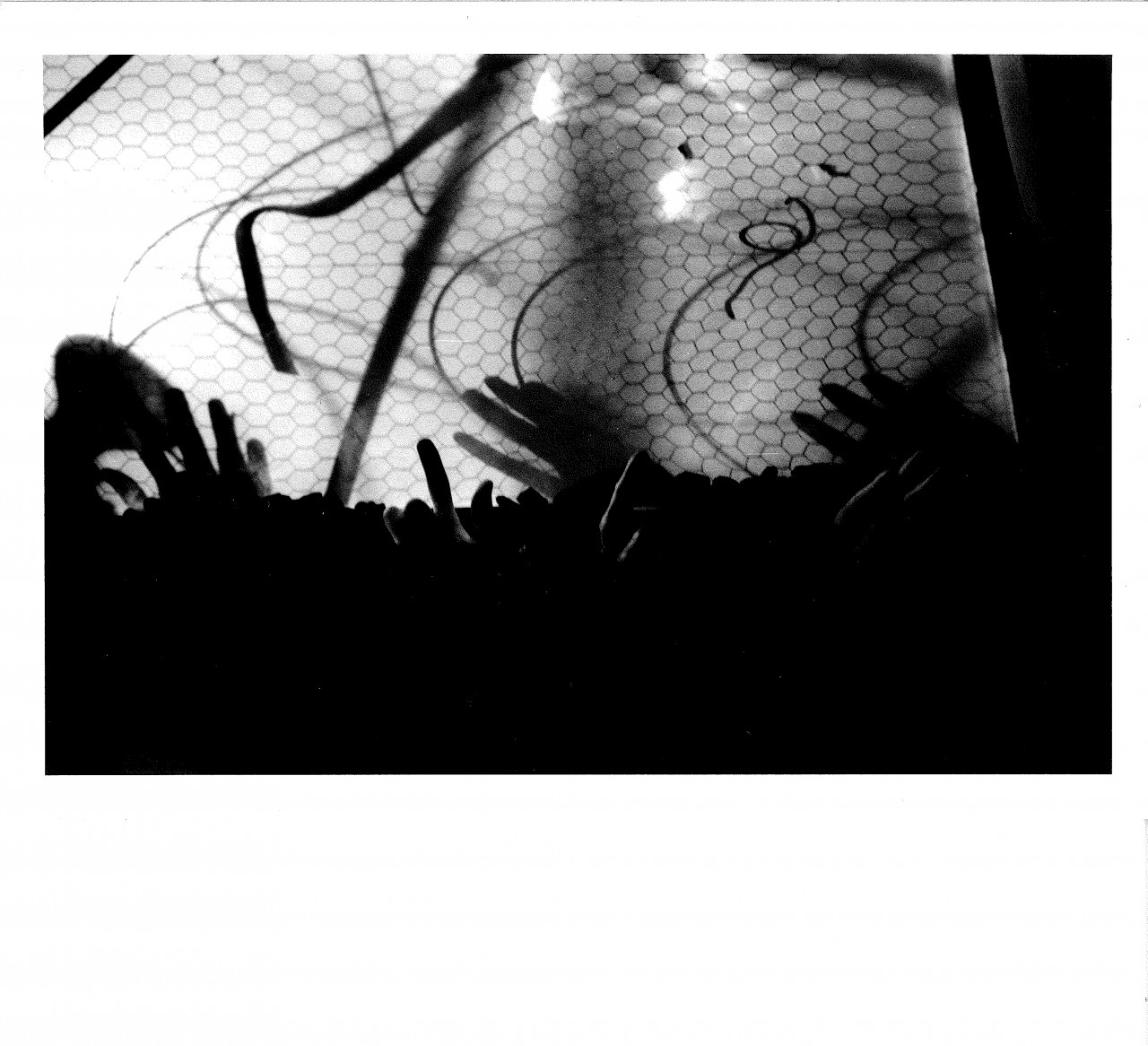April 9 – May 7, 1983
Artists Space
Installation: Paul Hunter, Jonathan Kessler, Kevin Labadie, Tim Maul, Fred Szymanski, and Stephen Whisler
Paul Hunter's Chamber Music is a series of tubular shaped sculptures constructed out of cardboard like kaleidoscopes. The viewer looks through each sculpture into a deep illusionistic space at the end of which is a room with doors, windows and an occasional chair or table. These miniature settings provide a poetic cloister for the passage of light, which filter through screens and perforate the walls of the sculpture. Hunter's work utilizes the movement of light which is controlled by the viewer by moving the sculpture towards or away from the exterior light source. This manipulation of light Hunter views as analogous to tonal variations in music. The play of these subtle variations in Hunter's work produces a quiet and contemplative atmosphere.
Dub for Dervishes, Jonathan Kessler's series of motorized wall sculpture consist of plastic mannequins, plants and toys which appear to somnambulate behind a glass screen. Homemade timing devices mechanize these objects, producing repetitive movements in concert with the flash and fade of colored lights. Kessler synchronizes the lights and movements; this rhythm reinforces a variety of themes which refer to Kessler's personal experiences and interests: travels in Africa, astrology, Chinese painting, archeology and Jamaican music. Inspired by the special effects in contemporary science fiction films and TV, Kessler animates small objects to suggest a much broader range of images.
Kevin Labadie's sculpture Vulcan's Reign is a monumental teepee with hexagonal screens through which the viewer sees the image of a blacksmith pounding monotonously at his anvil as confetti explodes around him. The sculpture constructs an arena in which the mythological figure is held prisoner of his own device. The work is theatrical and evokes a spectacle by playing out an absurd and hypnotic ritual obfuscated by color filters and strobe lights which suggest a chaos of volcanic-like activity. Labadie sees his work "as a symbiotic relationship between sculpture, found objects, drawing, drama, dreams and machines...the piece is about production and energy, two key words in this Nuclear Age."
Tim Maul and Fred Szymanski have collaborated on a sound installation, Broadcast/State, involving a large plaid backdrop and many small radios attached to an industrial coat rack. The coat rack acts as an antenna for the radios which are tuned in to different stations, resulting in a cacophony caused by the contradictory messages received and transmitted by the radios. This communication network represents the illusion of social democracy that flirts with anarchy. Maul and Szymanski "have set out to record how individual agents conform to the practices of institutions and also to show how the evidential tokens of institutions are themselves the product of individual actions."
Stephen Whisler's collection of seven large painted sculptures are "an attempt to capture the fleeting worlds of waves, fire, light, paths of motion, etc., and to slow them down to the still world of objects which can be contemplated in mythic time. These sculptures are first and foremost objects in themselves, not models of processes." Whisler's work is a codified translation of metaphors in contemporary literature and mythology into three dimensional forms. The sculptures are individualized through the use of various materials, i.e., corrogated cardboard, wood and copper piping to make pieces which appear physically quite different, but correspond in their oblique assertiveness and direct design.
Paul Hunter is a Canadian artist living and working in New York City. This is his first exhibition.
Jonathan Kessler has recently shown work in the "Four Alumni" exhibition at the Visual Arts Gallery, Purchase, NY, & the "Ice and Air Show," Bolton Landing, New York.
Kevin Labadie lives in Baltimore, Maryland and has shown work recently in the "Divergencies" exhibition at Maryland Art Place, Baltimore, the C. Grimaldis Gallery, Baltimore and the State House, Annapolis.
Tim Maul has recently shown at A&M Art Works in New York, the "Perspective Sonorities" exhibition with Fred Szymanski, which toured through Rimini and Venice in Italy, Bonn and Munich in Germany and Lugano, Switzerland. He has also performed for "An Art and Television Conference" at the University of Iowa.
Fred Szymanski has performed live electronic music in New York City since 1979 and he has recorded "Les Disques du Crepuscule", TWI 039, 1981 and Factory Records, A-Fac-A-2, 1982.
Stephen Whisler lives and works in New York City. He has recently shown work at the Libra Gallery, Claremont, California. This is his first show in New York.
Artists Space regular exhibition program is sponsored by the New York State Council on the Arts, the National Endowment for the Arts, the Institute of Museum Services, the Jerome Foundation, the Robert Sterling Clark Foundation, the Samuel Rubin Foundation, and the Lauder Foundation. Corporate Sponsors are AT&T Long Lines, Chase Manhattan Bank, Citibank, Consolidated Edison, EXXON Corporation, Morgan Guaranty Trust Company, I.M. Pei & Partners, Philip Morris and Warner Communications.
